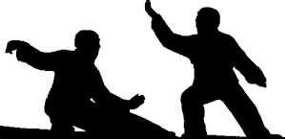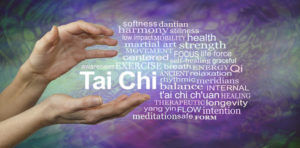Wellness for Vitality and well being..
Place content here and below
…
The 8 Pillars of Wellness
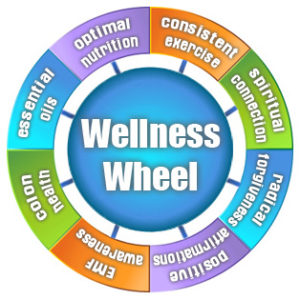
More than ever before, we hear about wellness in the media, in conversations at Starbucks, and even the workplace. When we think of Wellness, we think of well-being, wholeness, and balanced health. We think of a self-awareness that causes us to be at peace with ourselves and the world around us, with a focus on holistic health.
What is Wellness?
Wellness is an active process of living a fully engaged life at every level of being. It is becoming aware of, and making healthy choices toward a healthier state of life. How can we pursue wellness in 2017? Understanding wellness is easier when we use the concept of 8 Pillars.
“Life is not one component, but many parts working together. With the 8 Pillars in place, wellness can be ours in 2018”…
The 8 Pillars of Wellness
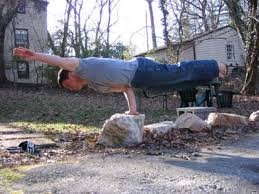
1) Relational Wellness – How You Connect
How we connect with others is critical to our own sense of health and well-being. We each need between 8-10 meaningful touches per day to be mentally and emotionally healthy. No wonder so many people feel like they’re missing something! Relational Wellness speaks to healthy conflict resolution, social intelligence, effective communication skills, and the capacity to be truly intimate.
2) Mental Wellness – What You Think
We are what we think, and become the product of the thoughts we consistently embrace. Happy people work down to the detail of their daily thought life, and teach themselves how to think healthy thoughts consistently which empower and inspire them. We need a health Mental & Emotional Support System; a system of thoughts and beliefs which support us in our dreams and aspirations.
3)Emotional Wellness – How You Feel
Emotions are not thermostats but thermometers. They are not root causes, but are symptomatic of underlying issues. However, the way we feel has a huge impact on our level of motivation, our actions, our behaviors, and our results. Take time for emotional management, emotional intelligence, relaxation, and healthy thinking, which leads to healthy emotions.
4) Physical Wellness –Physical Health
Our body is our temple. We are responsible to take care of it, and treat it with respect and tenderness. If we do this, we will generally have healthy outcomes which will enable us to lead a fruitful life. Physical wellness leads us to focus on healthy nutrition, regular sleep, regular exercise, and self-care.
5) Spiritual Wellness –Values& How You Treat Others
The best measure of your spirituality is not the church, mosque, or temple you frequent. The best measure is how you treat others. It is walking with integrity, honesty, fairness and compassion. Respect. Kindness. Authenticity. Gratitude. Selflessness. It is also taking time for personal reflection, meditation and prayer.
6) Professional Wellness – What You Do
Professional Wellness is far more than the money you make or the title you hold. It is a sense of living in alignment with your “LIFEFIT”: your unique combination of gifts, abilities, passion, education, and life experience that makes you who you are. It is being fully yourself, and making money as you do!
7) Financial Wellness – What You Have
Financial Wellness is not a certain number of zeros in your bank account or driving a certain car. It is abundance. True abundance is having enough for you and those you love, and being able to contribute to the needs of others. In 2017, weed out unhealthy habits of excessive debt and poor money management choices, and promote healthy choices of stewardship, saving and investment, building assets, and planning for the future.
8) Community Wellness – What You Contribute
Martin Luther King, Jr. said that,
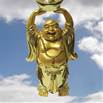
“Life’s most persistent and urgent question is, ‘What are you doing for others?’”
As humanity, we are not designed to be like the Dead Sea, with an inflow but no outflow. We are designed to contribute, add value, and render service to the world around us. The truth is that we all have a unique contribution, and we are happiest when we are making our greatest contribution.
Though each one of us will contribute something different, our rewards in life are generally in direct proportion to our contribution. So, another quote from Martin Luther King, Jr. will help us in terms of what and how we contribute:
“If a man is called to be a street sweeper, he should sweep streets even as Michelangelo painted, or Beethoven composed music, or Shakespeare wrote poetry. He should sweep streets so well that all the hosts of heaven and earth will pause to say, here lived a great street sweeper who did his job well.”
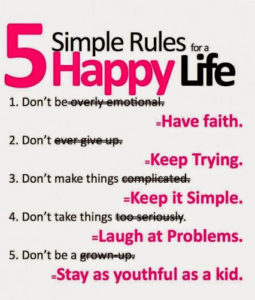

Peace sifu Dennis Pounall
Smokers Recovery Wellness Program 2019-2020
GETTING ACTIVE:
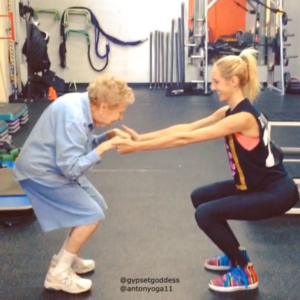
Being physically active is a choice that most people are gifted with from birth, unless hamper by disease or deformity
but “getting active” is a personal choice that may change the overall outcome or ease the management of certain lifestyle diseases induced by unhealthy choices, Smoking and tobacco related nicotine addiction is a complex psychobiophysiological lifestyle addiction that requires a multilevel approach in order to recover and maintain good health and wellness.
It requires patience, planning and conviction to truly modify your lifestyle to return vitality to your mind body and spirit ..
The Smokers Recovery Wellness Program can help
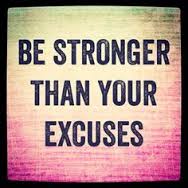
Smokers Recovery Wellness Program is an innovative 8-week smoking cessation program in which clients learn to participate in a 60 min. group exercise program 2 – 3 x per week promoting cardio respiratory health, mindful movement, flexibility, strength training, and meditative stress reduction techniques while
receiving practical harm reduction and support on quitting -abstinence reducing smoking. Program Cost is $99:00 per person.

*Plus 49:00 Assessment Fees (consult)
The training programs are offered at any location , YOUR ( Participants receive education, resources, and support from Smokers Rehab Specialist, and Quit Training Instructors as well as from other smokers in the program..
Participants are guided through a gentle and progressive “lungevity” based exercise programs that will teach them to improve their overall fitness level, reduce nicotine cravings, anxiety and stress related to nicotine withdrawal, improve cardio respiratory fitness, and develop new alternative method to mange nicotine addiction
Each participant receives a written guide, coupons for nicotine replacement therapy, and additional support from a quit coach through a toll-free quit line.
*Physical activity is a healthy alternative to smoking that aids smoking cessation efforts and prevents relapse, while increasing other significant health benefits.
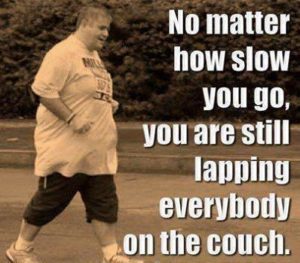

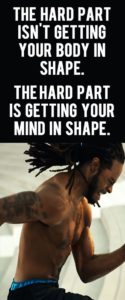
-
* When physical activity is promoted as a smoking cessation aid, it can be integrated into existing treatments to increase feelings of control and to address fears of weight gain….
Provided through the Stop Program Smoking Cessation Program, Smoking Cessation counseling, Canadian Cancer Society resources, Smokers Help Line, counseling support, motivation, Inspiration, Fun, and Exercise Lungevity Program
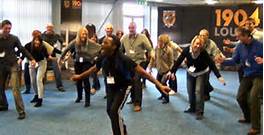
*program can be offered at your facility
Quit get Fit loose weight feel Great!!!

Keeping the romance alive one breath at a time….
Taiji boxing and the art of effective communication
Taiji boxing is a rare and exact science, but it is also an art form because each practitioner will have their own unique method of presenting and applying its principles, both as an effective form of self defense and a method of self- cultivation and disease prevention’s. The principles embedded in this discipline stem back thousands of years and incorporate a belief system from Indo-Chinese histories. The premise is based in two complementary philosophies, Taoism and Buddhism.
 Taoism was developed along time ago, around the 6th century B. C.. E Lao Tzu is considered to be the founder of this philosophy. It is based in nature and its circadian, ecological influences, through observations, and interpretations on its effects on mankind. Taoism was based on the Taoist sage’s empirical observations and applications of natural physical laws. The major goal of all Taoist sages was to reach a state of “immortality”. This was to mean to transcend all physical and spiritual restriction and live in harmony and unity with nature. Taoism introduced the concept of yin and yang, and the theory of complementary opposite. This later included the five element theory and the eight trigrams with the development of theories for the book, “The I-Chin” or the book of changes.
Taoism was developed along time ago, around the 6th century B. C.. E Lao Tzu is considered to be the founder of this philosophy. It is based in nature and its circadian, ecological influences, through observations, and interpretations on its effects on mankind. Taoism was based on the Taoist sage’s empirical observations and applications of natural physical laws. The major goal of all Taoist sages was to reach a state of “immortality”. This was to mean to transcend all physical and spiritual restriction and live in harmony and unity with nature. Taoism introduced the concept of yin and yang, and the theory of complementary opposite. This later included the five element theory and the eight trigrams with the development of theories for the book, “The I-Chin” or the book of changes.
Buddhism was introduced to China from India around the 6 the century by Siddhartha Gautama of the Shakhya clan, who introduced the philosophy and exercises of yoga and meditation. This philosophy focused more on internal and spiritual development, and on the concept of compassion and non-violence as a means of personal development. The higher goal is to reach a state “Enlightenment” which is to cultivate both wisdom and compassion.
 These two doctrines were combined by a Taoist priest, and developed into a complex system of self- development through a martial art discipline. This is the essence of Taiji Quan and the root of Taiji boxing. Taiji boxing is both a martial art and a method of personal development. Using the principles found in the “13 powers” in daily communication can be a very effective and natural advantage to practicing Taiji boxing.
These two doctrines were combined by a Taoist priest, and developed into a complex system of self- development through a martial art discipline. This is the essence of Taiji Quan and the root of Taiji boxing. Taiji boxing is both a martial art and a method of personal development. Using the principles found in the “13 powers” in daily communication can be a very effective and natural advantage to practicing Taiji boxing.
SHI San Shi (Thirteen Powers)
The thirteen powers is a term described by Master Sam Masich. It is comprised of eight trigrams in the arms and five phases in the legs.
This is a method of utilizing the principles of Peng, Lu, Ji, An, CAI, Lie. Zhou, Kao. These energies are integrated into the formless form of Taiji boxing and combined with the 5 phases Method, Central equilibrium, step left , step right, retreating step, advancing step.
As a martial art, this vocabulary is dependent on your instructor and his interpretation. Peng force is the power of resilience and flexibility, and harnesses the innate quality of spontaneous, effortless recoil… just like an elastic band!
Lu force could be likened to re-direction of energy in a downward direction… much like trying to force the same polarity of a magnet together… there is a subtle but definite shift.
Chi force is used to support the other force in both attack and defense techniques. This is like a rim and a tire… both need to be in good condition for a smooth ride with one supporting the other.
An force is the ability to listen or sensing. This gives you the advantage of limitless options for attack and defense by allowing you the advantage of being able to read your opponent’s intentions. This is like a radar early- warning system that is always scanning and reporting back information.
Tsai force is the concept of pluck and re-direct your opponent’s energy, usually towards the ground. This technique is like plucking a fruit of the tree. If the fruit is ripe, it comes off easily, but if not, it requires a decisive movement in order to achieve the same goal.
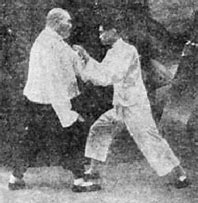
Lieh force is what is called “short Jing”. This is a form of Fa-jng that is decisive and conclusive, delivered at close range with minimal outward expression. This is like when a tire blows out on your car… there is no warning, simply a release of energy and then it is over.
Chou force is like a sudden interruption or distracting force, and is used primarily as an elbow strike or a knee strike to interrupt or disrupt your opponent’s technique balance or flow… just like an unforeseen speed bump or pot hole on a relatively smooth road or highway.
K’ao force is a subtle and elusive force, and is sometimes called ‘shoulder strike’ or bump. It is used to fill the space between two bodies and can be used as an attack or defensive move. ..but body balance and stability must be mastered in order for success.
The Five Phases (five stepping skills)
Advancing Step: This description is a conceptual idea that is based in the phrase of “to enter is to be born and to retreat is to die”. This bears the concept that to be continually retreating and in constant defence could have detrimental results in both martial arts and in life. You should seek to continually advance with care, compassion and caution in self defence as in life. Within this phase there are options such as rising step , sinking step, collecting step, curved step, slanting step, horse riding step, fairy step, pushing step, turn the body over step, Fishing step.
Retreat backward step. This is a type of break backward step and is very concise, a balance movement that conveys the illusion of retreat but not the intention of defeat as in repulse monkey. This foot work is designed to create an imaginary void that lures the opponent into a trap like a bull fighter taunts the bull to come forward carelessly…. full steam ahead.
Looking left. This is the ability to re-direct to a force on the left side and attack the right side. This involves co-ordination and timing. This is a method of distraction and deception by presenting a opening on the right side yet moving and attacking the left side.
Looking Right. This is the opposite of looking left as everything is reversed and done just as subtly. It is important to able to move in both left and right direction and not favor one or the other and be able to move both inside and outside of your opponent’s guard when attacking or defending yourself. ..just like a steering wheel is only useful with the full range of motion both turning left and right with equal ability and ease of motion.
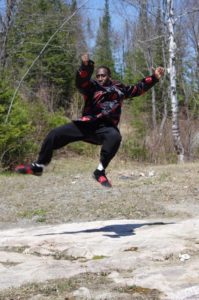
Central Equilibrium”. This is the most difficult, yet the most essential, for Taiji boxing, the practice of Taiji Quan and Qigong. Everything begins and ends with this step. Central equilibrium contains the whole paradox of unity of mind, body and spirit, and stillness in motion and motion in stillness.
This is the Essence of Taoism and Buddhism combined to create a flexible mind and spiritual awareness, to maintain both inner calmness and outside peace.
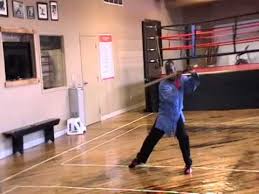
The art of Taiji boxing and effective communication. By applying these principles found in the thirteen powers, it may be possible to avoid verbal conflict that may lead to violence or a negative interaction with our fellow man. Sometimes applying the concepts of listen, adhere, and follow answer in our daily conversation, as a continuum of Taiji push hands, can be a refreshing change to managing the stress of a break down in communication with our friends, family or co-workers.
If we employ active listening skills, such as listening with our hearts (emotional contentment and compassion), hearing with our inner ears, eye to eye, heart to heart, it may allow us to have better communication skills regardless of language, culture or religious beliefs.
Adhere and follow. If we try to stay focused and not be easily distracted or preoccupied we may be able to use a clear calm mind to decipher what they are asking, saying or meaning when they speak.
Lead connect answer. If we are still with our emotional opinions, preconceptions when dealing with others, it may provide an opportunity for spiritual enlightenment and, of course, imaginary sense of immortality which leads to compassion and sometimes kindness and caring. This way we at least provide a venue for a positive interaction.
By applying the truths found in the art of Taiji boxing to everyday interaction, it may one day help to preserve the art of spoken communication in a time of hyper electronic internet and blackberry mania. The spoken word may one day find itself extinct!
What is Taiji Quan? It is born of the Wuji, and is the mother of yin and yang, when it moves it divides, and at rest, it unites. This is a quote that was used by Master Sam Masich in his article of Taiji Quan and Jing. I believe that by getting people to move in their mind, body and spiritual cultivation may help us to see individually how we can all unite in one way or another to make a better world.
Peace,
Sifu Dennis Pounall
![]()
Peace at Taijiboxer.com.
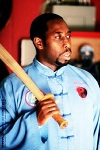
References material from Tong Ren May 08. (Taijiquan by master Sam Masich.
The Tai chi boxing chronicle, by kuo lien ying.
Tai Chi as a Therapy
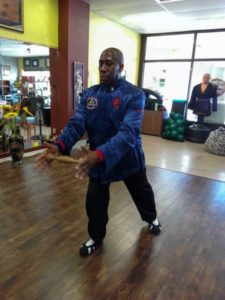
Tai Ch i is one of the ancient Chinese martial arts developed for self-defense, disease prevention,
and stress reduction through meditation and movement. At VitFit Klub Tai Chi is practiced for its
many health benefits and is one of our numerous wellness Mind Body Programs we offer to help keep
our members healthier, happier and more active in there daily lives.
Tai Chi (full name: T’ai chi ch’uan, which translates to Supreme Ultimate Force) is characterized by
controlled breathing, slow, gentle movements of arms, legs, body balance and awareness that aim to
reduce stress and tension at the same time increasing a feeling of serenity. It is often described as
“meditation in motion,” but can also be viewed as the bodies natural “medication through motion.”
Tai Chi & Positive Functional Wellness Development Programs
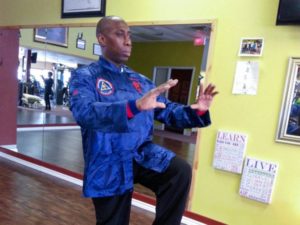
Tai Chi is can be used to mange stress and fatigue because it offers another method of getting in touch
with your inner, true self – similar to yoga (which means union of mind body and soul). It gives you a
personalized tool that you can access and use with minimal space, no special equipment and all you
need is patience, persistence and practice, to feel the benefits of this unique self directed therapy.
“Meditation Helps People Look at Themselves and Understand Their Motivations,”
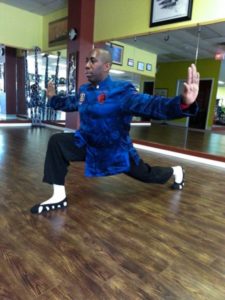
Mindful movement requires patience and effort, so meditation may be difficult at first for most of us.
However it is possible to learn and feel the benefit from this daily practice, as you will feel increasingly
better the longer you stay with it. Although some people have trouble doing seated meditation, moving
meditation such as Tai Chi, the mind can focus on the moves, the techniques, and other details while
gradually learning to meditate. As the meditation starts to work, personal insights come to light, self
discipline improves and the need for self-destructive thought tendencies and behaviors diminishes.
The end result produced by Tai Chi is a mental and physical calmness generated in a completely
natural way.
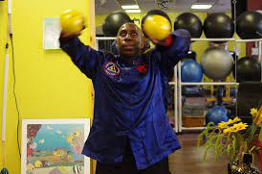
Tai Chi also helps keep emotions more in balance, reducing the need to succumb to
unhealthy coping techniques such as addiction. The ability to handle stress improves, as does the sense
of feeling more centered and grounded to handle life’s challenges.
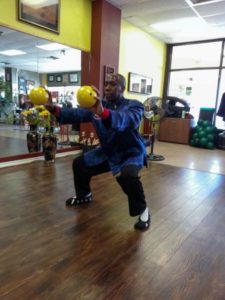
Conclusion: Taiji quan is a self directed system for rejuvenation, and reenergisation, that can benefit
people of various levels of health and fitness interest. The environment at our training center is designed to promote well being peace and clarity of individual purpose as well as fun and social well being.
Come by and join us, take a class and share the peace
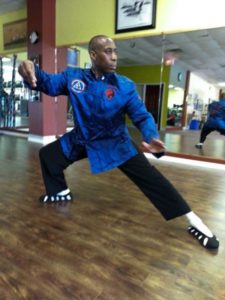
Contact: 905 302 8689 www.taijiboxer.com
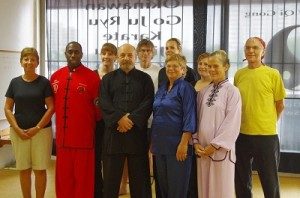
Instructor: Sifu Dennis Pounall C.T.I.
